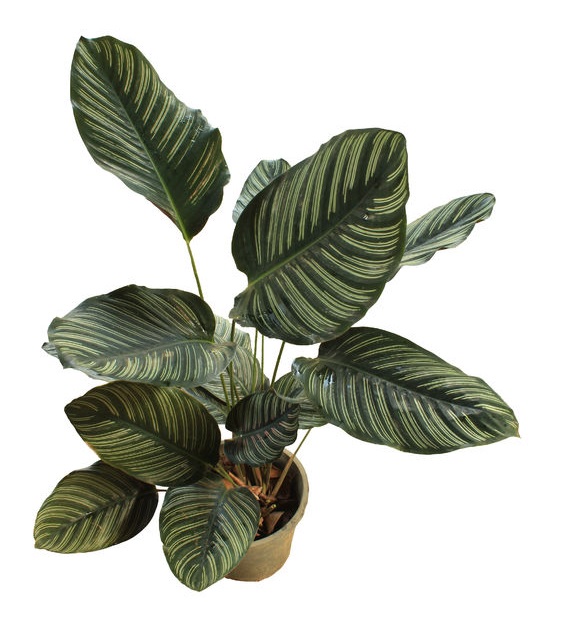





Calathea Ornata is a plant that is native to South America and seen in many tropical climates such as Thailand. There are several members of the same family and they are all known for their large leaves, all of which have patterns that are extremely noticeable whilst their colors are stunning.
The leaf of the Pin-Stripe Calathea grows at the end of long stems that require the right care and location in order to continue looking as healthy as possible. If kept indoors the plant will not grow much larger than 2ft wide or 2ft tall.
This is a plant that looks attractive indoors but it is also possible to keep outdoors and can bring many different areas to life such as patio’s, porches and decking. It can also be planted in beds and borders. Due to its foliage, this is a superb plant to put among other plants that have large foliage.
Flowering and Foliage: This is a popular plant with attractive leaves and colors but the plant does not flower very often indoors. However, it is a gorgeous species with dark green and glossy looking leaves (green with pink stripes). This is a plant that has leaves with a pattern (veins) that could be classed as feathered and in some cases it has a pink hue to it.
To add to its uniqueness, the underside of the leaf has a beautiful reddish purple color. This is a plant that grows in an upright position. It grows actively between the months of March to October as a result of moist soil.
The pink stripes will turn white when the plant ages.
Level of care: To ensure that the Calathea Ornata grows exceptionally well it does require a certain level of care making it not quite a beginner plant to grow.

If there is a lack of humidity then there is the possibility that the plant will suffer as it does require a certain degree of humidity.
Whilst they are able to withstand a wide range of temperatures if the temperature falls too low it will cause problems.
It is also susceptible to attack from pests such as caterpillars, mites and mealybugs, so be sure to put some form of pest control in place. Take measures to remove pests as soon as possible.
Copyright © www.100flowers.win Botanic Garden All Rights Reserved